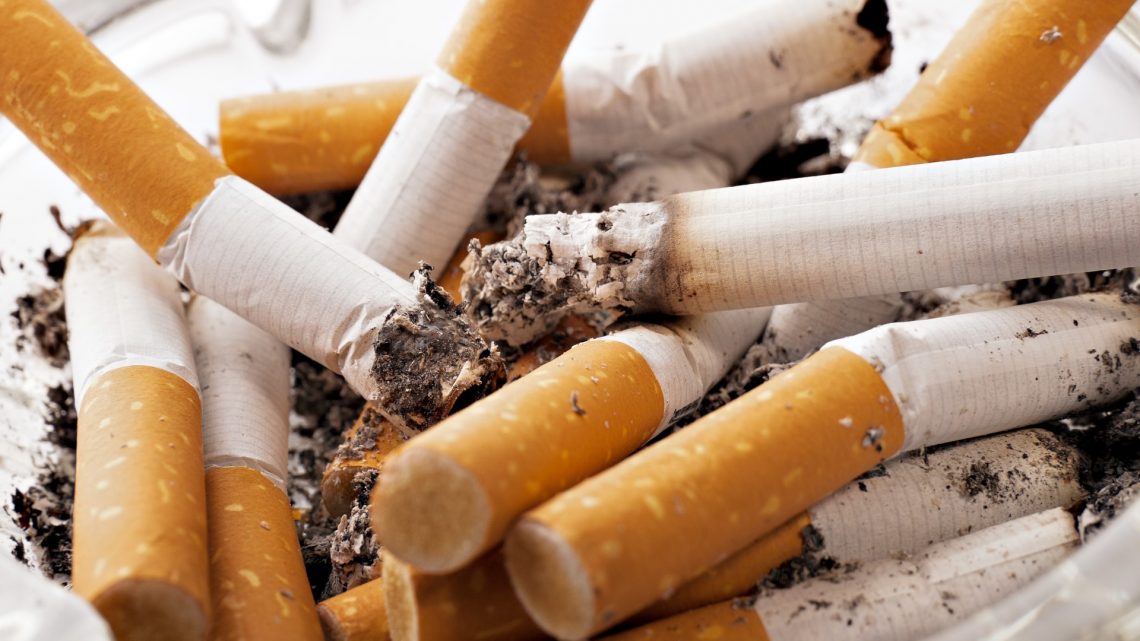Despite the proliferation of vapes and e-cigarettes, tobacco is still the popular choice for smokers across the United States. According to the Centers for Disease Control and Prevention (CDC), although cigarette use has significantly declined over the past couple of decades, about 34 million adults still smoke.
Using the latest available data from the CDC, we created an interactive map showing the percentage of each state’s population that regularly smokes cigarettes. Hover over each state to see the smoking rate and population count.
Top 5 States With Highest Smoking Rates
- West Virginia – 26%
- Kentucky – 24.6%
- Louisiana – 23.1%
- Tennessee – 22.6%
- Arkansas – 22.3%
Top 5 States With Lowest Smoking Rates
- Utah – 8.9%
- California – 11.3%
- Connecticut – 12.7%
- Hawaii – 12.8%
- Washington – 13.5%
After assessing the top five states, we hypothesized that lax smoking laws are a big contributor to their higher-than-average rates. In West Virginia and Kentucky, there are no smoking restrictions in private workplaces, restaurants, bars, retail stores, recreational/cultural facilities, and casinos/gaming establishments. In Louisiana, smoking restrictions are not required in bars. In Tennessee and Arkansas, smoking is allowed in bars and restaurants that restrict anyone under 21.
When it comes to Utah having the lowest smoking rate in the country, two factors are likely the contributors. First, Utah has a large Mormon population, whose religion restricts the use of tobacco and other drugs. Over 60% of Utah residents identify as Mormon, or nearly two million people. Second, Utah has some of the strictest anti-smoking laws in the U.S., including one that addresses secondhand smoke in apartment buildings and other dwellings.
While these rates are representative of firsthand smokers, it is also important to consider the rates of secondhand smoke inhalation. According to the CDC, secondhand smoke “causes nearly 34,000 premature deaths from heart disease each year in the United States among nonsmokers.” In some states (like Utah), you can sue your neighbor if their smoking “causes a nuisance”, meaning that it interferes with your comfortable enjoyment of life or property. Personal injury attorneys in states like these are helping victims of secondhand smoke receive compensation for their injuries and quality of life disturbances.
Here is a full table of the data:
| State | Smoking Rate | 2020 Population |
|---|---|---|
| Alabama | 20.9% | 4,908,621 |
| Alaska | 21% | 734,002 |
| Arizona | 15.6% | 7,378,494 |
| Arkansas | 22.3% | 3,038,999 |
| California | 11.3% | 39,937,489 |
| Colorado | 14.6% | 5,845,526 |
| Connecticut | 12.7% | 3,563,077 |
| Delaware | 17% | 982,895 |
| District of Columbia | 14.3% | 720,687 |
| Florida | 16.1% | 21,992,985 |
| Georgia | 17.5% | 10,736,059 |
| Hawaii | 12.8% | 1,412,687 |
| Idaho | 14.3% | 1,826,156 |
| Illinois | 15.5% | 12,659,682 |
| Indiana | 21.8% | 6,745,354 |
| Iowa | 17.1% | 3,179,849 |
| Kansas | 17.4% | 2,910,357 |
| Kentucky | 24.6% | 4,499,692 |
| Louisiana | 23.1% | 4,645,184 |
| Maine | 17.3% | 1,345,790 |
| Maryland | 13.8% | 6,083,116 |
| Massachusetts | 13.7% | 6,976,597 |
| Michigan | 19.3% | 10,045,029 |
| Minnesota | 14.5% | 5,700,671 |
| Mississippi | 22.2% | 2,989,260 |
| Missouri | 20.8% | 6,169,270 |
| Montana | 17.2% | 1,086,759 |
| Nebraska | 15.4% | 1,952,570 |
| Nevada | 17.6% | 3,139,658 |
| New Hampshire | 15.7% | 1,371,246 |
| New Jersey | 13.7% | 8,936,574 |
| New Mexico | 17.5% | 2,096,640 |
| New York | 14.1% | 19,440,469 |
| North Carolina | 17.2% | 10,611,862 |
| North Dakota | 18.3% | 761,723 |
| Ohio | 21.1% | 11,747,694 |
| Oklahoma | 20.1% | 3,954,821 |
| Oregon | 16.1% | 4,301,089 |
| Pennsylvania | 18.7% | 12,820,878 |
| Rhode Island | 14.9% | 1,056,161 |
| South Carolina | 18.8% | 5,210,095 |
| South Dakota | 19.3% | 903,027 |
| Tennessee | 22.6% | 6,897,576 |
| Texas | 15.7% | 29,472,295 |
| Utah | 8.9% | 3,282,115 |
| Vermont | 15.8% | 628,061 |
| Virginia | 16.4% | 8,626,207 |
| Washington | 13.5% | 7,797,095 |
| West Virginia | 26% | 1,778,070 |
| Wisconsin | 16% | 5,851,754 |
| Wyoming | 18.7% | 567,025 |





No Comment